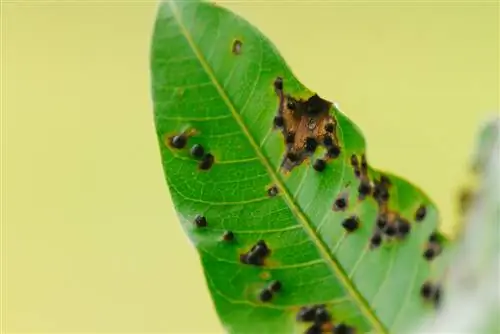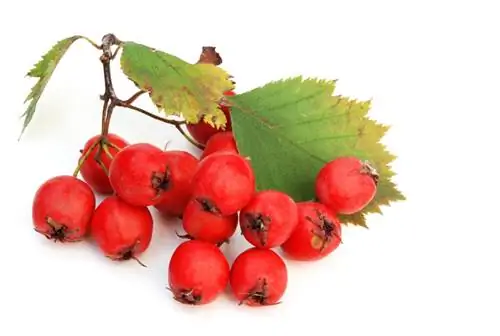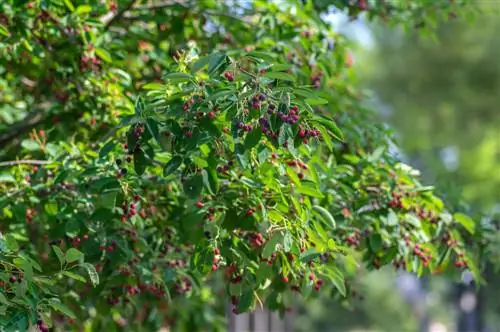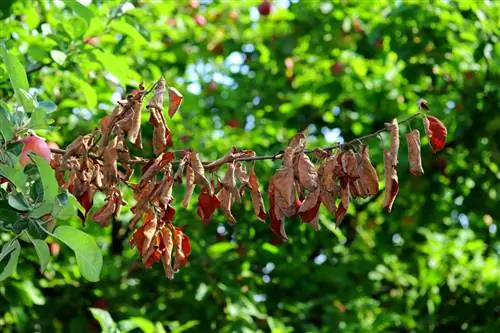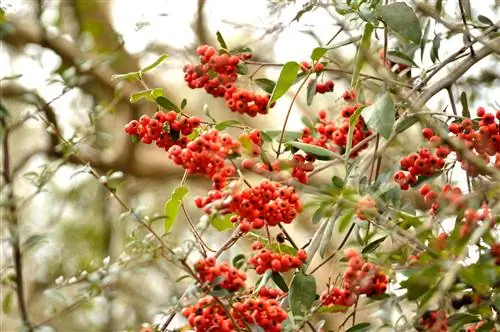- Author admin [email protected].
- Public 2023-12-16 16:46.
- Last modified 2025-01-23 11:21.
Fire blight has been occurring more and more frequently in Germany in recent years. The disease shows typical symptoms on loquats. Some measures prevent infection.
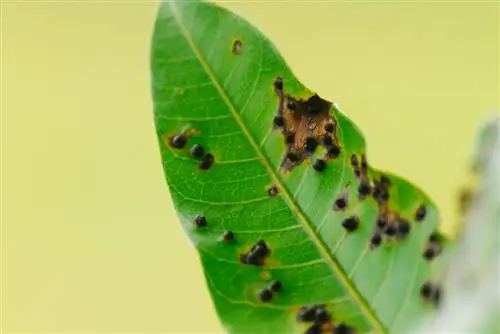
How do you recognize and prevent fire blight on loquats?
Fire blight on loquats is a bacterial infection caused by Erwinia amylovora and results in dried flowers, leaves and blackened shoots and branches. Preventive measures include avoiding susceptible plant species, avoiding nitrogen over-fertilization and choosing an optimal location.
Pathogens and symptoms
The cause of fire blight is the bacterium Erwinia amylovora. It spreads on rose plants that develop pome fruit. Dried flowers and leaves as well as black shoots and branches indicate an illness caused by the bacterium. When it gets into the plant organism, it clogs the ducts. As a result, leaves, flowers and branches receive neither water nor nutrients, which leads to the death of the tissue.
Infection
The bacterium spreads in rain and wind. It can be transmitted from flower to flower by insects. The flowers, open areas on the branches and wounds on the fruits serve as entry points for the pathogen. Another possibility of infection is through the breathing openings on the underside of the leaves, which lead into the ducts. The risk of infection depends on the age and he alth of the loquat. Young bushes are very vulnerable.
The pathogen survives in the bark of sick and weakened trees. From spring to autumn there is a risk of infection for other rose plants. Temperatures of over 18 degrees Celsius and humidity of more than 70 percent favor the living conditions of the bacterium.
Treatment
The disease is fatal in most cases as there are currently no treatment methods. At the first signs of illness, the affected areas should be removed immediately. Once the main stems are infected, the entire plant must be cleared. Small amounts of leaves and branches are disposed of as residual waste. If larger branches or plants need to be burned, you will need a permit. The responsible office will explain to you exactly how you should proceed in this case.
You can do this as a preventive measure:
- do not plant fire blight host species
- avoid over-fertilizing with nitrogen
- find the optimal location for the loquat
Reporting requirement
Fire blight is a notifiable quarantine disease. As soon as there is a suspicion of infection, you must contact your state office or the state office for agriculture. Samples from the infected plants are collected and examined in the laboratory. Once the bacterium has been identified, the office will decide on further measures. They warn surrounding fruit farms of the increased risk of infection.

